
Home Staging Checklist: Easy Steps for a Winning Home Presentation
When selling a home, presentation is key. To maximize a property’s appeal to potential buyers, many sellers now turn to home staging. This process involves strategically arranging furniture and decor to create an inviting atmosphere that showcases the best features of a home. To accomplish this, you need a home staging checklist.
By properly staging a home, sellers can often sell their properties faster, and in some cases, even at a higher price. A well-staged home allows buyers to visualize themselves living in the space, making it easier for them to see the potential of the property. With a comprehensive home staging checklist on hand, sellers can ensure they’re making the most of their property’s potential and attracting the most interest from potential buyers.
Key Takeaways from Home Staging Checklist
- Home staging enhances a property’s appeal to potential buyers
- A well-staged home may sell faster and at a higher price
- Utilize a home staging checklist to maximize a property’s potential
The Home Staging Checklist
A home staging checklist is a useful tool when preparing a house for sale. It helps to ensure that the home is presented in the best possible light to attract potential buyers. Here’s a comprehensive checklist for staging a home:
- Declutter Every Room: Remove personal items, excess furniture, and clutter to make each room appear larger and more inviting. This includes depersonalizing spaces by taking down family photos and personal collections.
- Deep Clean the Entire House: A clean home makes a strong first impression. Ensure that floors, windows, walls, and surfaces are spotless. Pay special attention to bathrooms and the kitchen, where cleanliness is crucial.
- Neutralize the Decor: Paint walls in neutral colors to appeal to a wider range of buyers. This can help them envision their own belongings in the space.
- Fix Any Minor Repairs: Address all small issues such as leaky faucets, loose doorknobs, or chipped paint. These small fixes can make a big difference in the overall impression.
- Optimize the Lighting: Open curtains to let in natural light and add lamps or fixtures to brighten up dark corners. Well-lit rooms feel more welcoming and spacious.
- Stage Key Areas: Focus on the living room, master bedroom, and kitchen. These areas often make the biggest impact on potential buyers.
- Set the Dining Table: A nicely set table can suggest a scene of family meals and entertaining, adding warmth to the dining area.
- Rearrange Furniture: Position furniture to showcase the flow of each room. You might need to remove pieces to prevent a crowded feeling.
- Enhance Curb Appeal: The exterior of the home is the first thing buyers see, so make sure the lawn is mowed, plant flowers, and ensure the entrance is inviting.
- Add Finishing Touches: Place fresh flowers in vases, have a bowl of fresh fruit on the kitchen counter, and display plush towels in the bathroom.
- Create a Welcoming Entrance: Make sure the front door area is clean, the doorbell works, and the house number is visible. A new welcome mat can also add appeal.
- Adjust the Temperature: Ensure the home is comfortably warm or cool, depending on the season, to make visitors feel comfortable during viewings.
For more detailed guidance, you can refer to resources like HGTV’s The Ultimate Staging Guide Checklist or the comprehensive list of tips from Professional Staging.
Why Stage Your Home?
The Impact of Home Staging
Home staging is a powerful tool to help potential buyers envision themselves living in a property. A carefully prepared home staging checklist ensures that every room in your house looks inviting and showcases its best features. The goal is to make it easier for potential buyers to imagine themselves living there, increasing the chances of a successful sale.
Staging not only improves the aesthetics of a home but also emphasizes its functionality. For example, thoughtfully placing furniture can show the ideal way to utilize a space, making even smaller areas look more spacious. Additionally, staging helps a property to stand out in today’s competitive real estate market, which can be a determining factor in attracting offers and achieving top dollar.
Statistics from Professionals
According to a study conducted by The Real Estate Staging Association, professionally staged homes spend 73% less time on the market compared to non-staged homes.
Here are some other notable statistics shared by industry professionals:
- National Association of Realtors (NAR): 83% of buyers’ agents say staging made it easier for buyers to visualize themselves in a property.
- HGTV: Home staging can increase a property’s value by up to 10%.
A well-executed home staging checklist can ultimately contribute to a quicker sale and a higher selling price. So, spending a little time and effort on staging your home can certainly pay off in the end.
Preparing Your Home
Decluttering Spaces
It’s essential to declutter your home to make it visually appealing to potential buyers. A simple way to start is by sorting items into three categories: keep, donate, or discard. Focus on removing unnecessary items, clearing countertops, and organizing closets. Remember, less is more, and a clean, spacious home is more attractive to buyers.
Depersonalizing Your Home
In addition to decluttering, depersonalizing your home is a crucial step. This means removing personal items like family photos, trophies, or any customized decor. It helps potential buyers envision themselves living in the house. Don’t forget to remove any political or religious artifacts, as these can be polarizing and distract buyers from focusing on the property.
The Cleaning Process
A deep cleaning of your home is necessary to make it pristine and appealing. Consider hiring a professional cleaning service to ensure a thorough job. Make sure all surfaces, floors, and windows are spotless. Pay special attention to areas like kitchens and bathrooms, where stains can be stubborn.
| Room/Area | Cleaning Task |
|---|---|
| Kitchen | Remove grease, clean appliances, wipe cabinets |
| Bathrooms | Scrub tile, clean grout, remove limescale |
| Living Spaces | Dust, vacuum, polish furniture |
Choose eco-friendly cleaning products whenever possible, as some buyers may be sensitive to harsh chemicals.
Essential Repairs
It’s time to tackle any necessary repairs you’ve been putting off. Fixing minor issues – like broken door handles, loose floor tiles, or chipped paint – demonstrates a well-maintained home. Evaluate the state of your walls, and if necessary, treat them with a fresh coat of neutral-colored paint. If your house has noticeable holes or cracks, make sure to seal them with the appropriate caulking or filler. A smooth and well-maintained surface not only looks better but may lead to fewer concerns from potential buyers.
Staging Interiors
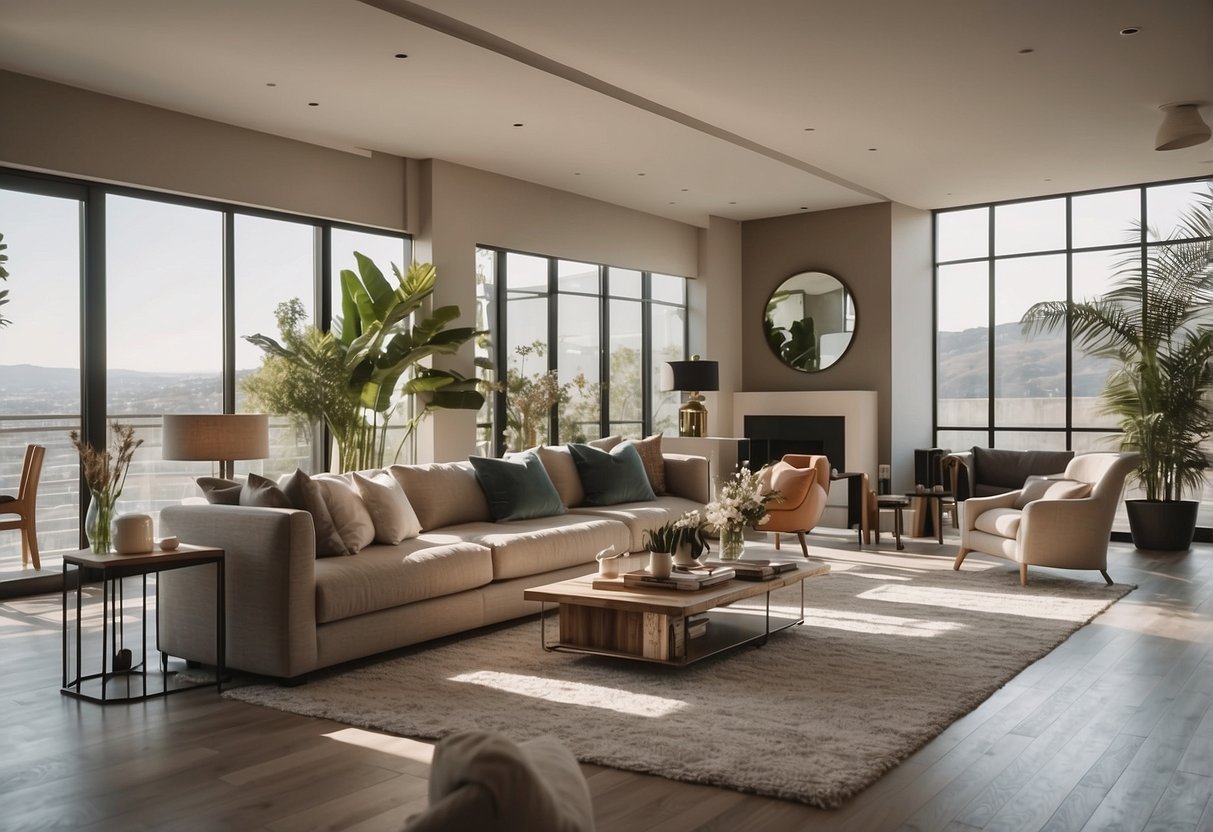
Optimizing the Living Room
In staging the living room, the focal point should be set on comfort and coziness. Rearrange furniture to create a conversational area, typically a sofa with one or two chairs around a coffee table. Remove clutter and unnecessary items, but feel free to add some neutral decor to the space. Remember to clean the area thoroughly!
Transforming Bedrooms
A serene and calm atmosphere is ideal when staging bedrooms. Opt for clean, crisp linens and emphasize natural light by opening curtains or blinds. De-personalize the room by removing family photos and clear out closets to display a neatly organized storage space that potential buyers will appreciate.
Decluttering and Organizing Kitchens
A clutter-free and functional kitchen will pique the interest of potential buyers. Start by clearing countertops, removing small appliances, and neatly organizing pantry items. Add some touches like a simple centerpiece on the dining table or a bowl of fresh fruit on the countertop, but avoid going overboard with decor.
Revamping Bathrooms
In setting up bathrooms, think clean, fresh, and spa-like. Replace worn-out bath mats with new ones, and provide fresh, neatly folded towels. Organize toiletries and personal care items in cabinets, and clean mirrors, sinks, and tubs. You could also consider placing a small plant or aromatic candles to enhance the space.
Setting Up Home Office Areas
A well-organized home office is definitely a selling point. Remove excess paperwork and files, and ensure the workspace is as neat as possible. Add a neat bookshelf or a small storage unit to display organization, and make sure to keep cables and wires organized.
Highlighting Attic and Basement
Attic and basement spaces are often overlooked, but staging them can add value to the property. Clear out any clutter and create functional spaces, such as a simple playroom in the attic or a mini home gym in the basement. Use proper lighting to brighten up the areas, making them feel more inviting.
Staging Exteriors
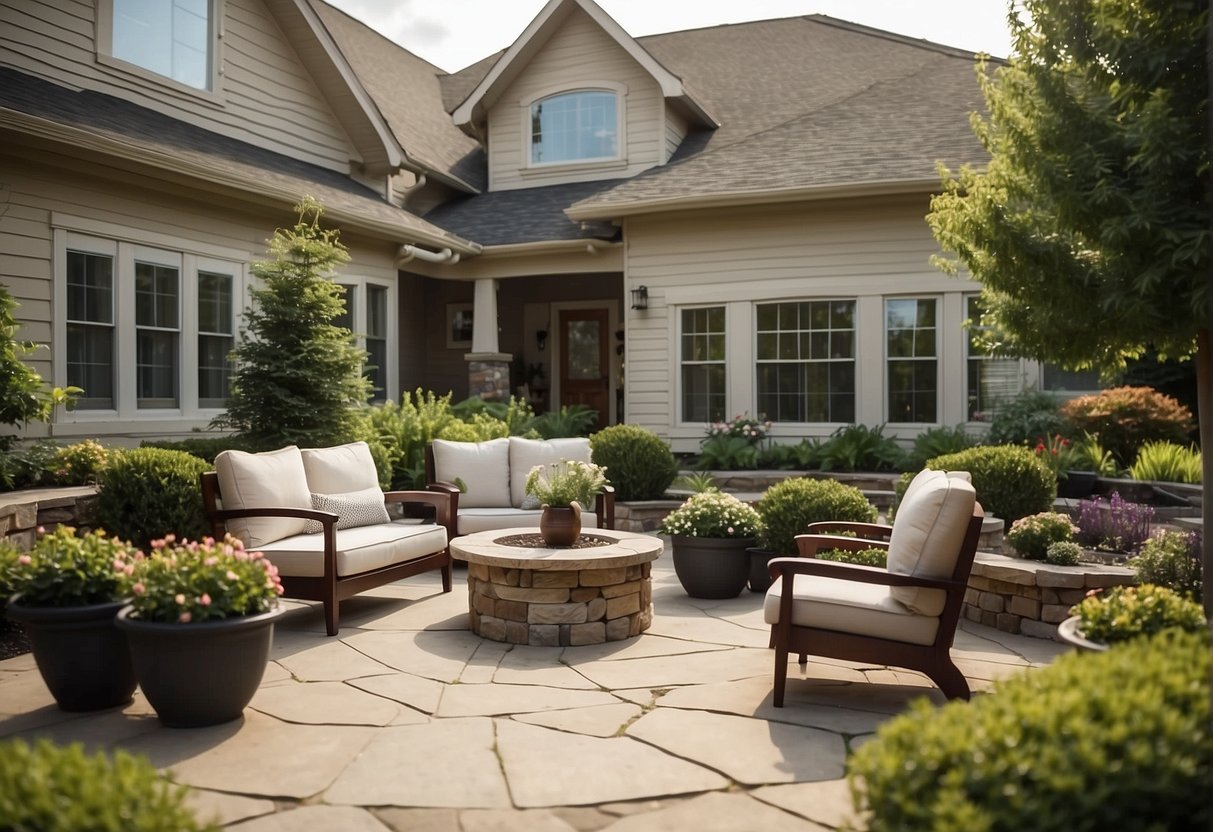
Boosting Curb Appeal
First impressions matter! When it comes to home staging, boosting curb appeal is an essential task. Start by cleaning the front door and surrounding area. A fresh coat of paint can make a significant difference. Don’t forget to polish the door hardware too. Next, tidy up the porch or deck. Arrange outdoor furniture in a welcoming manner and add some colorful cushions. Lastly, make sure the gutters are cleaned and the roof appears to be in good condition.
Sprucing Up the Yard and Garden
A well-maintained yard goes a long way in improving curb appeal. Begin with the lawn – mow it regularly and remove any dead patches. Trim and shape shrubs and other plants to emphasize the home’s architecture. Consider adding new mulch to flower beds to freshen up the look. Also, keep the walkway clean and clear of any clutter. Landscaping can make or break a home’s exterior appearance, so take your time to create an inviting atmosphere.
Refreshing Exterior Paint and Siding
A critical aspect of staging the exterior is refreshing the paint and siding. Begin by inspecting the condition of the siding. Pressure wash it to remove any dirt, algae, or mildew. If necessary, consider hiring a professional to repair or replace any damaged areas. After that, evaluate the current exterior paint situation. If it appears worn or outdated, a fresh coat of paint can make the house look like new again. Don’t forget to touch up window trims and railings for a cohesive look.
Remember that a casual tone can make the process of home staging feel more approachable and less intimidating. By following these steps for staging exteriors, potential buyers will be more inclined to explore the inside of the house.
Staging for Special Considerations
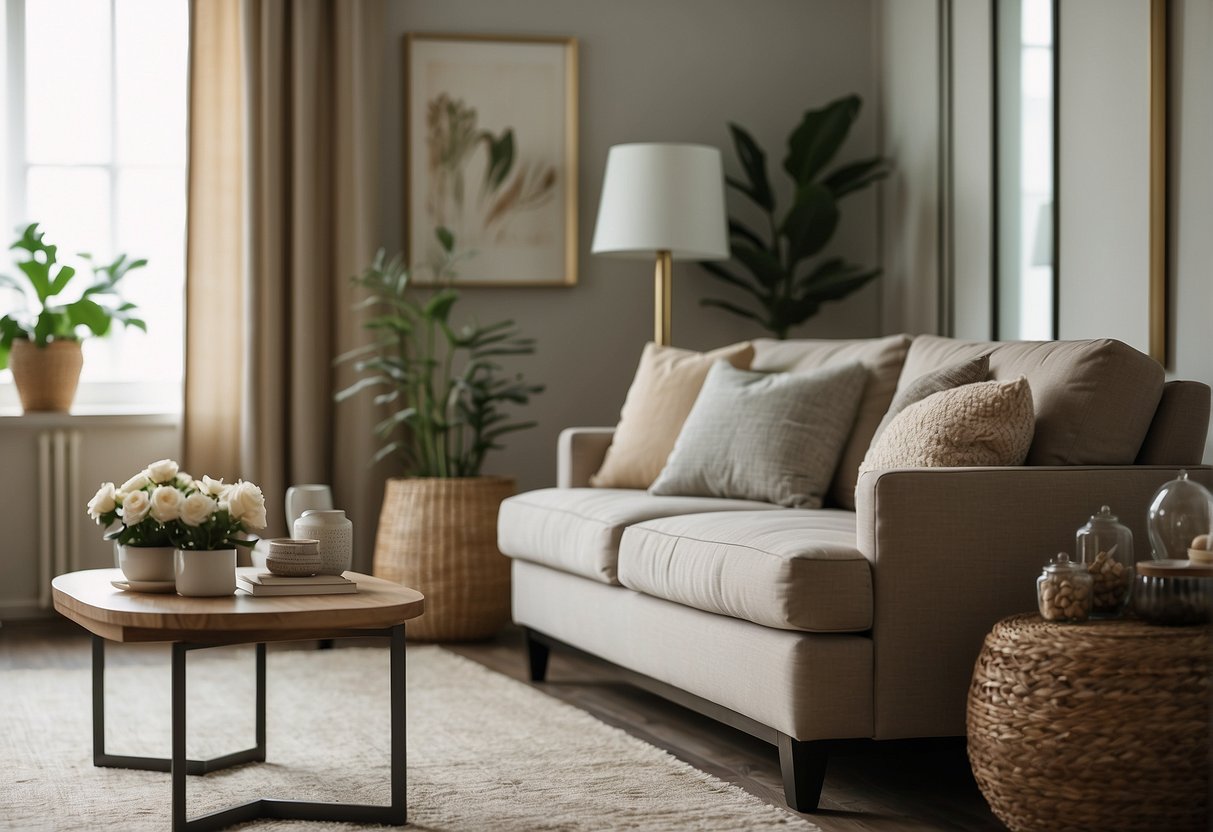
Staging with Pets
Staging a home can be a bit more challenging for pet owners. But fret not! A few minor adjustments can help showcase a pet-friendly home. To begin with, eliminate pet odors by deep cleaning carpets, upholstery, and any areas with lingering smells. Next, de-clutter and organize pet belongings. Use stylish storage solutions for toys, food, and other pet essentials. During showings, it’s best to remove pets from the premises or keep them in designated areas to help potential buyers focus on the home’s features.
Staging for Family-Oriented Buyers
When staging for families, keep in mind the importance of creating a welcoming, kid-friendly environment. First, remove family photos to help buyers envision their own family in the space. Next, consider organizing toys in a visually appealing manner. Using bins, shelves, or cubbies can help showcase an easy-to-maintain play area. Additionally, make sure to highlight any family-friendly features, such as ample storage, large yards, or proximity to schools and parks.
Staging for Open House
An open house is a crucial event, as it attracts a broader range of potential buyers. To prepare for the big day, one must ensure a smooth collaboration with their real estate agent. A well-maintained appearance is essential both inside and outside the home. Consider the following tips:
- Boost curb appeal: Maintain your lawn, add fresh mulch, and ensure walkways are clean and inviting.
- Clean and declutter: Remove personal items, ensure surfaces are spotless, and create a spacious feel.
- Highlight key features: Showcase elements such as fireplaces, built-ins, or outdoor living spaces.
- Create a welcoming ambiance: Use pleasant scents, ambient lighting, and comfortable temperatures to make guests feel at ease.
By addressing these special considerations, any home will shine during the all-important staging process.
Finishing Touches

Setting the Right Temperature and Lighting
Creating a cozy and inviting atmosphere is crucial for impressing potential buyers. Set the thermostat at a comfortable temperature between 68-72 degrees Fahrenheit. Make sure all light bulbs are replaced and working to ensure a bright, welcoming space. Open the windows to let in natural light, and use stylish lamps or candles for additional illumination in darker areas. In addition, consider adding decorative curtains to regulate the sunlight coming through the windows.
Adding Decorative Accents
Simple decor elements make all the difference. Incorporate fresh flowers in a simple vase or potted plants to add life and vibrancy to rooms. Emphasize the color scheme and style of the home with throw pillows and well-folded towels. Utilize these items with moderation, since too many can create a cluttered feel—just enough to give the property character.
Here’s a quick breakdown of some decorative accents:
- Fresh flowers or plants
- Candles
- Throw pillows
- Towels
Eliminating Odors and Ensuring Freshness
Potential buyers expect a clean, fresh scent when they walk into a home. Start by thoroughly cleaning the house, paying close attention to high-smell areas like the kitchen, bathroom, and carpets. If necessary, use professional cleaning services. Remove any pet bedding or litter boxes, and tackle lingering odors with air fresheners or scented candles.
Maintain a pleasant aroma by:
- Deep-cleaning the entire house
- Removing pet-related items
- Using air fresheners or scented candles
- Opening windows for fresh air before showings
To summarize, these finishing touches of setting the right temperature and lighting, adding decorative accents, and ensuring a fresh, odor-free environment can boost your home staging efforts and leave a lasting impression on potential buyers.
Hiring a Professional Home Stager
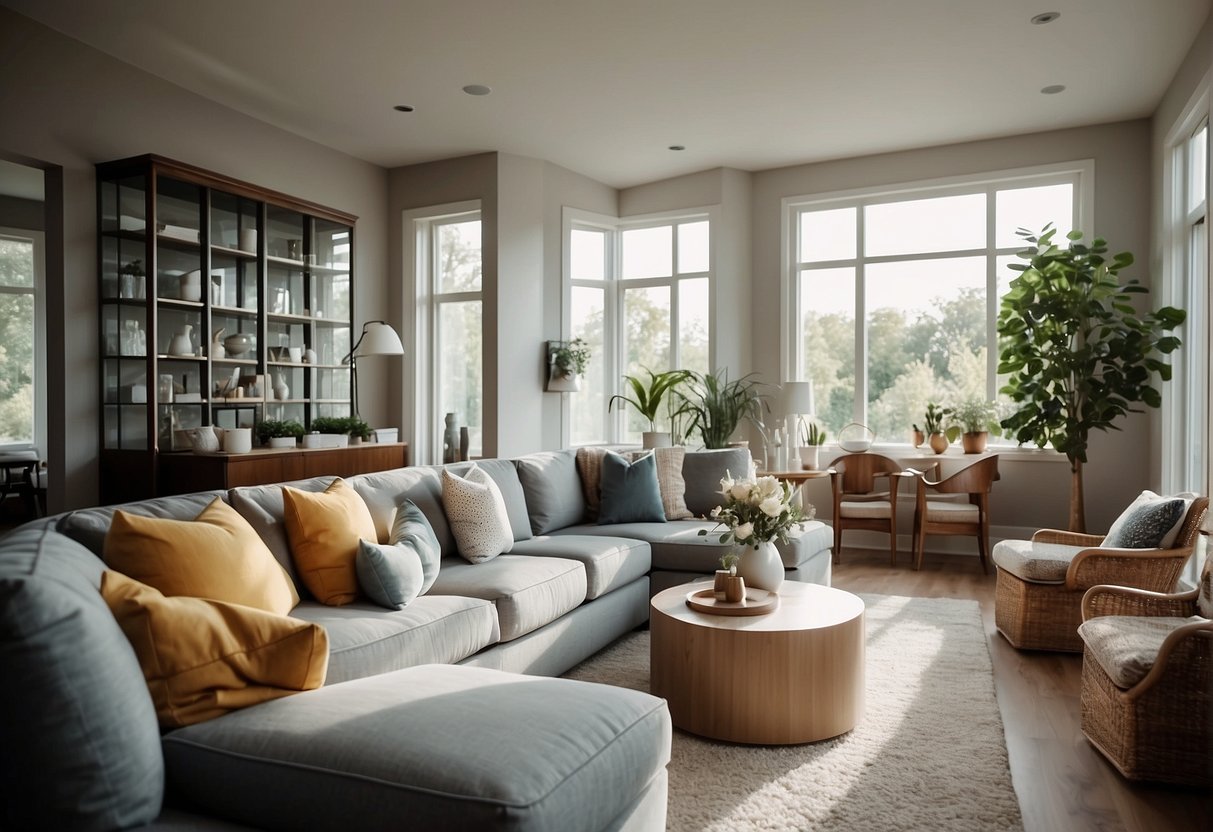
Hiring a professional home stager can be a game-changer when it comes to selling a property. Home stagers have the skills and experience to make a home look its best, attracting potential buyers and often raising its resale value.
When considering a professional home stager, it’s essential to research their qualifications, experience, and reviews from previous clients. Look for a stager who has a solid portfolio and a proven track record of success. Don’t be afraid to ask for references and check online reviews to ensure the stager is reputable and reliable.
Here’s a simple table to help you compare the services and prices offered by professional home stagers:
| Services Offered | Average Home Staging Costs | Duration |
|---|---|---|
| Consultation | $150 – $600 | 1 – 2 hours |
| Occupied Staging | $800 – $5,000 – per room | 1 – 4 weeks |
| Vacant Staging | $2,000 – $5,000 – per room | 1 – 4 weeks |
Keep in mind that home staging costs vary significantly depending on the location, size of the property, and the specific services needed. However, investing in a professional home stager can be well worth the expense if it results in a faster sale and higher closing price.
It’s also essential to communicate openly with your home stager. During the initial consultation, talk about your expectations, budget, and any specific concerns you have for the property. They should be able to provide suggestions and create a custom plan that aligns with your goals.
In summary, hiring a professional home stager can be a valuable investment when selling your property. By taking the time to research stagers, assess their qualifications, and compare costs, you can find the right stager to help you present your home in the best light possible and ensure a successful sale.
Pricing Your Staged Home
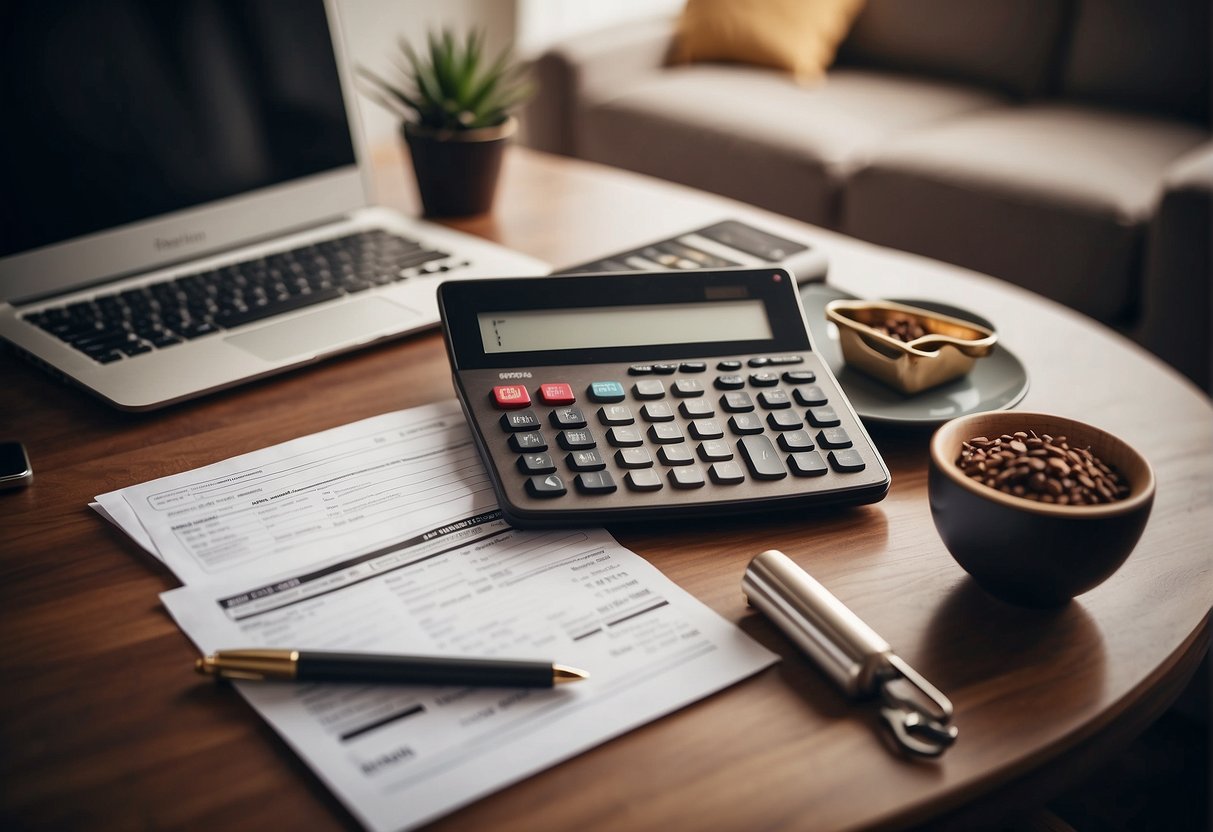
When it comes to getting top dollar for your staged home, setting the right price is crucial. Pricing your home too high could scare away potential buyers, while setting it too low might attract bargain hunters who don’t appreciate your staging efforts.
To set a competitive price for your staged home, it’s essential to research the local real estate market. Start by examining the sales prices of similar homes in your area (known as “comps”) that have recently sold. This will give you a solid understanding of what buyers are willing to pay for a property like yours.
A great resource you can use for pricing guidance is an experienced real estate agent. They possess insider knowledge of the local market, which can greatly influence your home’s value. Some agents may even provide a free, no-obligation comparative market analysis (CMA) that compares your home to other properties in your area.
Don’t forget to consider any improvements you’ve made during the staging process. You’ve most likely invested time and money into making your home more attractive to potential buyers, so it’s only fair to factor in those costs when setting a price.
Here’s a quick checklist for pricing your staged home:
- Research local comps: Check recent sales prices for comparable homes in your neighborhood.
- Consult a real estate agent: Get expert pricing advice from a professional who knows the market.
- Factor in staging costs: Include the expenses involved in preparing your home for sale.
By following these guidelines, your staged home will be more likely to attract a higher price and sell more quickly. So, make sure to give proper attention to pricing your staged home, and good luck!
Home Staging Checklist Recap
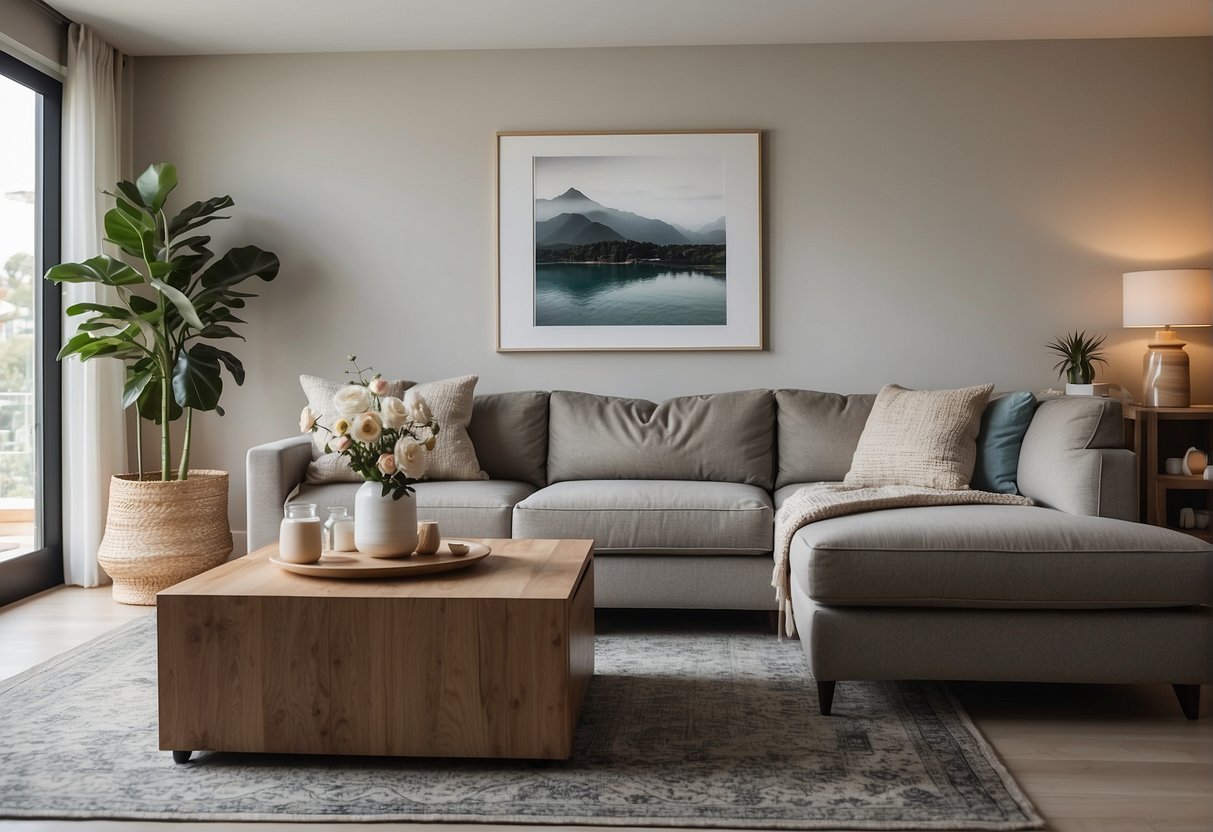
In order to sell your home faster and for an optimal price, home staging is a crucial element to consider. This brief recap will guide you through the essential steps in a home staging checklist, ensuring a successful day of showing.
To start, declutter your home. Remove any personal belongings, unnecessary items, and furniture that may overcrowd the space. Organizing closets and storage areas will also showcase the storage potential of your home to potential buyers. The Ultimate Home Staging Checklist provides excellent decluttering tips.
Enhance the curb appeal of your property by sprucing up the front yard, repainting the front door, and ensuring the walkways are clean and well-maintained. Remember, first impressions count when it comes to attracting buyers.
In terms of interior design, keep it neutral and universally appealing. Repaint any bold-colored walls with lighter shades, and replace outdated or worn-out fixtures. Make sure each room has a clear purpose and consider removing or repositioning furniture to create a more inviting flow throughout the house.
To make your home appear more spacious, you should optimize lighting. Open all window coverings to allow natural light inside, and turn on every light during showings. Consider adding lamps and accent lighting if necessary.
A key part of home staging is cleaning and maintaining your property from top to bottom. Give special attention to high-traffic areas, such as bathrooms and kitchens. Make sure every surface is spotless, and don’t forget to clean windows and mirrors.
Lastly, be sure to download a comprehensive home staging checklist PDF to help you efficiently track your progress.
By following these essential home staging steps, you’ll provide potential buyers with a memorable and appealing experience when viewing your property.
Luxury Specialist at McGraw Realtors
With a diverse background, including a career as an Air Force fighter pilot and entrepreneurship, Bill transitioned to real estate in 1995. Co-founding Paradigm Realty with his wife, Charlene, he quickly rose to prominence in Oklahoma City’s luxury real estate scene. Now, as one of the top agents with annual sales surpassing $20 million, Bill’s dedication to exceptional service remains unparalleled. With a legacy spanning over two decades in the industry, Bill’s expertise and commitment make him a trusted name in luxury real estate.